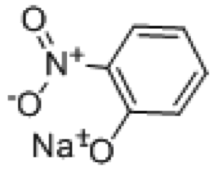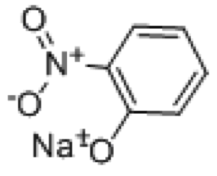Plant growth regulators
PGR
Plant growth regulators (also called plant hormones) are numerous chemical substances that profoundly influence the growth and differentiation of plant cells, tissues and organs.
Plant growth regulators function as chemical messengers for intercellular communication . There are currently five recognized groups of plant hormones: auxins, gibberellins, cytokinins, abscisic acid (ABA) and ethylene. They work together coordinating the growth and development of cells. Ethylene is mainly involved in abscission and flower secscence in plants and is rarely used in plant tissue culture. In addition to the five principal growth regulators, two other groups sometimes appear to be active in regulating plant growth, the brassinosteroids and polyamines.
Structural Formula

Chemical Composition
(3S,3aS,4S,4aS,7S,9aR,9bR,12S)-7,12-dihydroxy-3-methyl-6-methylene-2-oxoperhydro-4a,7-methano-9b,3-propenoazuleno[1,2-b]furan-4-carboxylic acid
Direction
To get more tillering, To get smaller size of potato and also to get more seed potato, To get longer bunch, For thinning unwanted fruit, uniformity in size and colour followed by second at the time of berry initiation, To get bigger fruit, To get uniform size of fruit, acre to delay the ripening of fruit, for long storage when the green colour started to change, To delay the maturity ripening of fruit.
Structural Formula

Chemical Composition
Sodium 2-nitrophenolate; 824-39-5; Sodium o-nitrophenolate; O-Nitrophenol sodium salt; 2-Nitrophenol Sodium Salt; EINECS 212-527-5
Direction
Strong cell agent, infiltrate rapidly into the plant body, offer the activity greatly to cell, to promote cytoplasm circulation, accelerate growth speed, break dormancy, make roots & sprouts stronger, raise the absorption of nutrients so can make them bloom and fruit in advance, enhance immunity of plants, regulate hormones in plant body of auxine, cytokinin, ethylene, G A in the plants which can balance the reproductive & nutrition growth.
Structural Formula

Glyphosate

Chemical Composition
2,4-D
-(2,4-Dichlorophenoxy)acetic acidGlyphosate
-2-(phosphonomethylamino)acetic acidWeeds
Alfalfa , Horseweed or marestail , Ragweed-commonBindweed, Ironweed Ragweed-giant, Bullnettle Lambsquarters-common, Shepherdspurse, Bittercress-smallflowered, Lettuce-prickly , Smartweed-Pennsylvania, Carolina geranium, Morningglory-annual, Sowthistle-annual, Cinquefoil-common and rough, Mousetail Speedwell, Clover-red, Mustard-wild , Thistle-Canada, Cocklebur-common, Onion-wild, Thistle-bull, Dandelion, Pennycress-field ,Velvetleaf, Eveningprimrose-cutleaf, Peppergrass, Vetch-hairy,Garlic-wild, Purslane-common, Virginia copperleaf, Annual bluegrass, Common lambsquarter, Common ragweed, Downy brome, Panicum species, Giant ragweed,Field sandbur, Foxtail species, Pennsylvania smartweed, Redroot pigweed, Shattercane, Fleabane (Erigeron species), Smooth pigweed, Volunteer wheat, Bermudagrass, Russian thistle Canada thistle, Kochia, Prickly lettuce, Common mullein(Poa species), Curly dock , Dallisgrass, Field bindweed, bluegrass, Kentucky, Fescue species, Hemp dogbane, Johnsongrass, Napiergrass, Paragrass, Quackgrass, Vaseygrass, Silverleaf nightshade, Swamp smartweed, Milkweed (Asclepias species)Wirestem Muhly .
